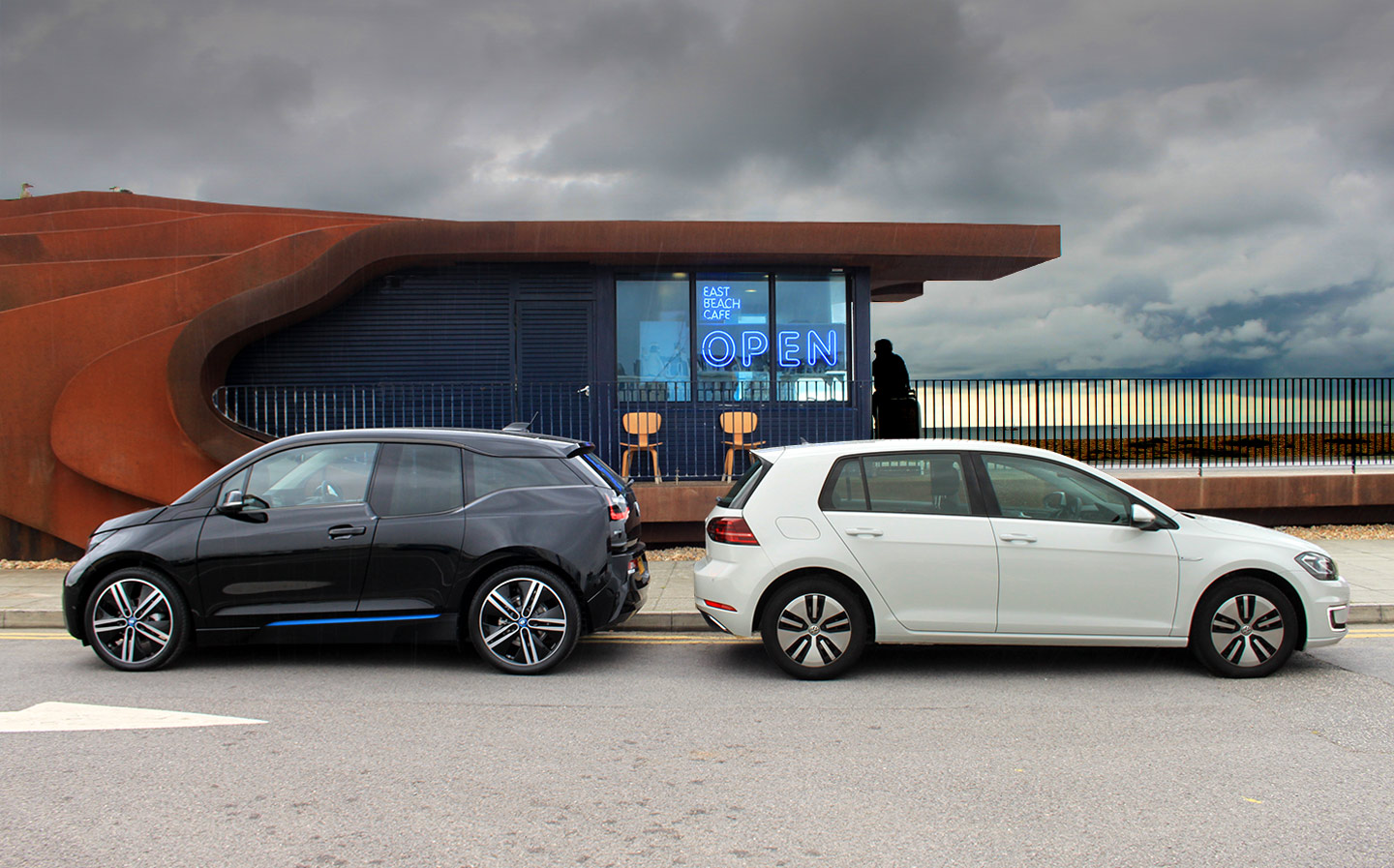Battle of the electric family cars: 2017 BMW i3 REX vs Volkswagen e-Golf
Plug into the future of family motoring
BY 2040, if the government gets its way, drivers looking for a new car will have a simple choice: buy an electric car or a hybrid car.
The Volkswagen e-Golf and BMW i3 REX give a taste of things to come. The former is Britain’s best-known family hatchback first, and a pure-electric car second. It should mean it’s user-friendly and doesn’t require as big a leap of faith as a high diver jumping from a cliff top.
The i3 REX is an electric car for pragmatists. In addition to having an electric motor and a battery pack, it has a two-cylinder petrol engine, packaged beneath the boot floor, in the same space as the car’s electric motor. This acts as a generator, to maintain battery charge when it gets low.
The e-Golf, which is propelled under battery power alone, has been revised for 2017 as part of the updated Golf range, and can officially travel 186 miles on a single charge. The i3 REX has a battery range of around 140 miles, but the REX motor allows it to travel a total of 200 miles before you need a top-up of electricity or petrol.
Two different approaches, then, but worthy of comparison — and exploration of the benefits/disadvantages — as both could easily be on the shortlist of anyone wishing to get on the electric vehicle (EV) bandwagon.
Either way, the e-Golf and i3 do little to counter the common grumble about electric cars amongst drivers: they’re expensive to buy up front. The e-Golf costs from £32,190, and the i3 REX from £36,230 – but those prices are before allowing for the government’s plug-in car grant, which contributes £4,500 toward the price of cars with emissions of under 50g/km that can drive for at least 70 miles on battery power alone. Running costs are low, too, with the cost per mile for mains electricity significantly cheaper than petrol or diesel.
We put the pair to the test, on a trip to the seaside. Needless to say, it rained; could the electric cars keep our spirits high?
2017 Volkswagen e-Golf review
Words: Will Dron
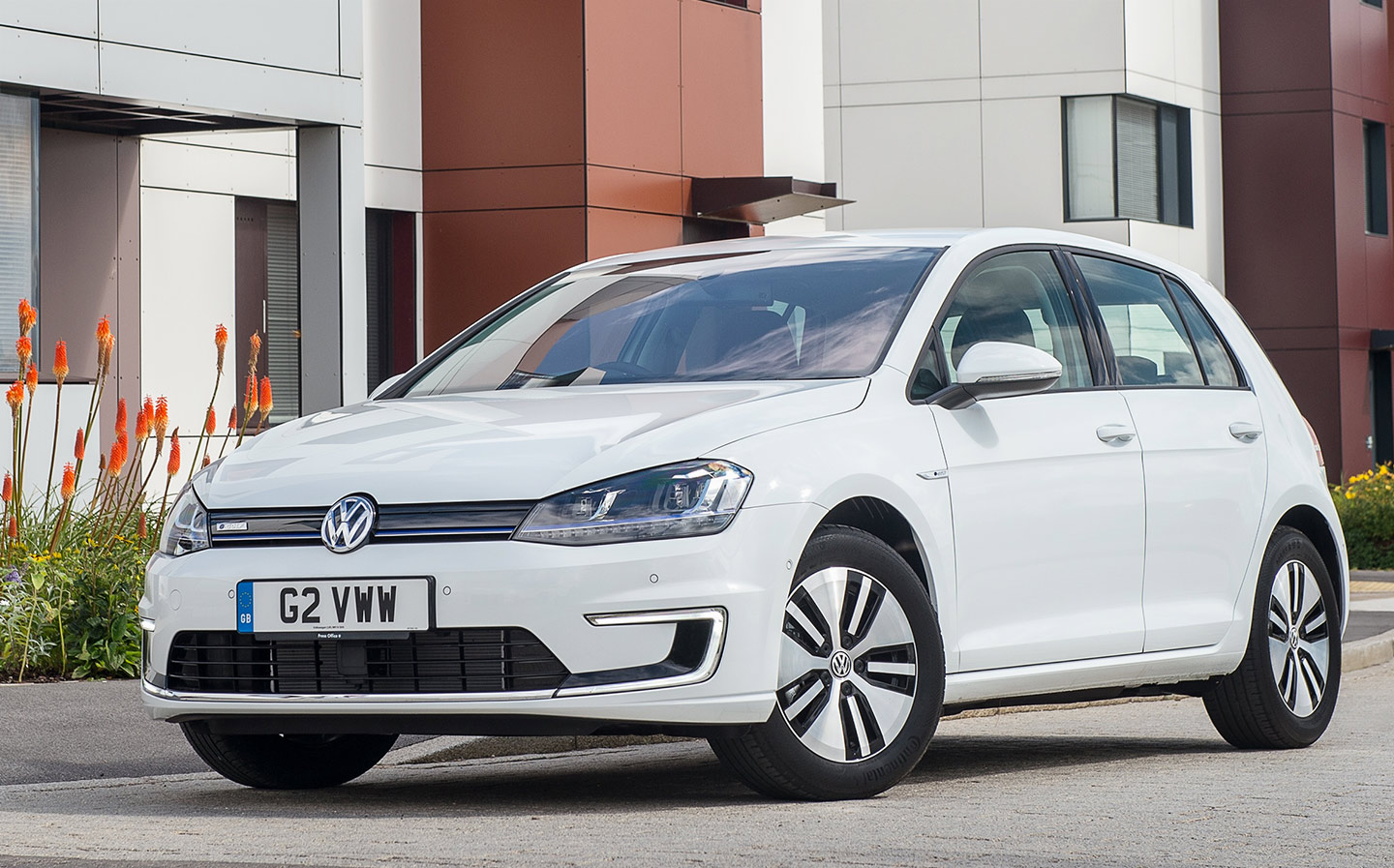
Expectations were low when the e-Golf was delivered on a trailer rather than driven from VW headquarters, as is the custom with its — to use the lingo of the electric car driver — ICE (internal combustion engine) cars. Not because of the trailer, especially; I’ve driven enough electric cars to have realistic expectations when it comes to how far you can drive between charges, especially if a journey requires 70 miles of mostly motorway cruising, as it would have in this case.
No, it was more that I believed VW to have copped out with the e-Golf; taken the easy route to plug-in cars in the face of huge commercial and political pressure following dieselgate.
I mean, just look at it. Well, it’s a Golf, isn’t it? VW sold 5,236 of its ever-popular hatchback in July alone, just 15 short of the best-selling Ford Focus. In order to create its electric car, all VW had to do was strip out the petrol or (whisper it) diesel engine, along with its transmission, and bolt in a few Duracell batteries and an electric motor. Oh, and change the alloys and tweak the styling of the lights slightly.
When you climb inside, it looks like a Golf, too. The instruments are the same, the switchgear is the same, the seats are the same, the infotainment system is the same (albeit with updated software to show electric energy flow and driving efficiency).
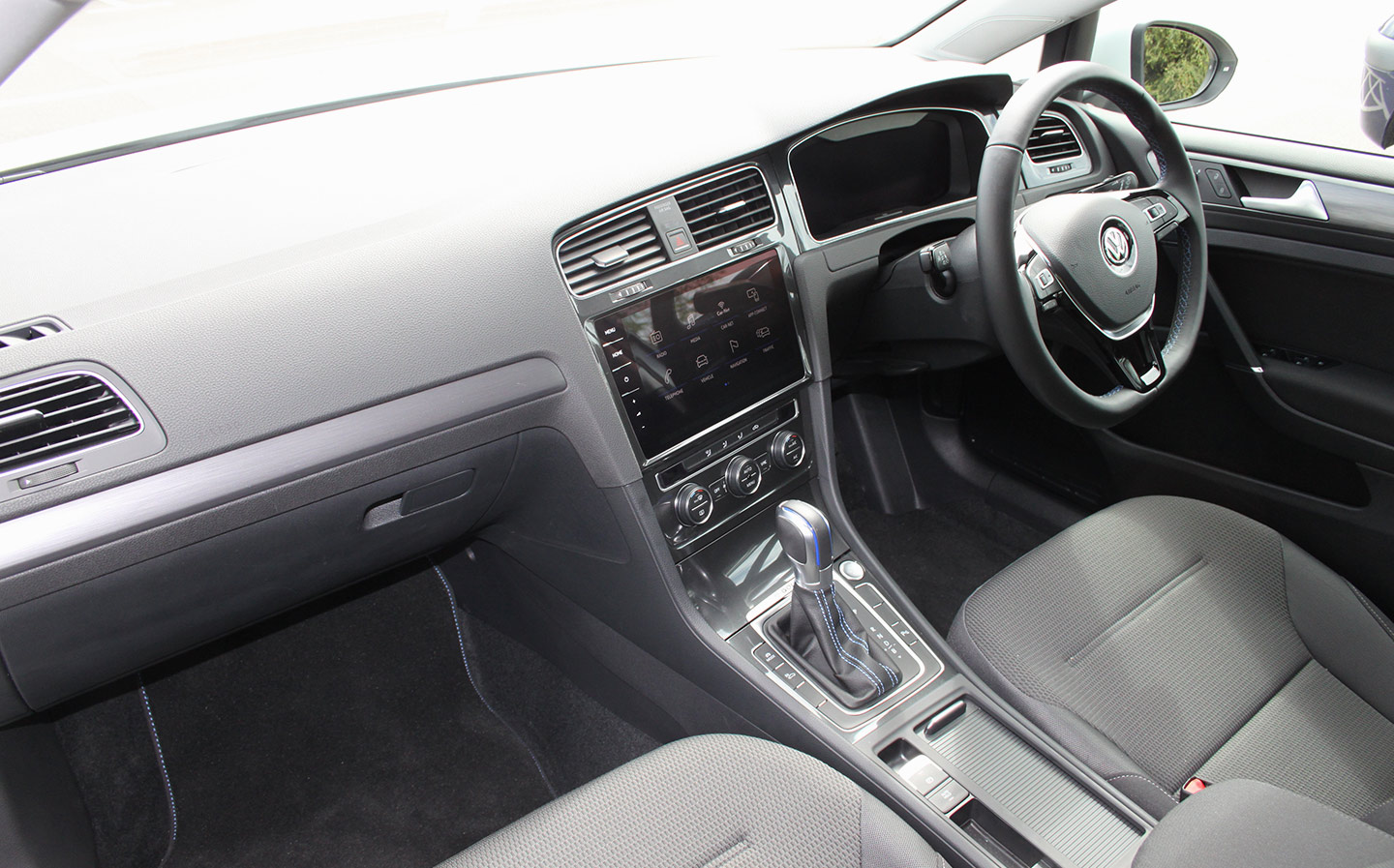
The i3, on the other hand… now that’s an incredible achievement. Designed from the ground up as an electric car, with a carbon fibre tub to save weight and carefully considered packaging, for optimal weight distribution. And the interior of the i3 — totally original and full of reclaimed wood and other dolphin-friendly materials. BMW put a huge amount of research and development into coming up with that car.
But then you remember… being a Golf is no bad thing.
The moment the penny really dropped was when James Mills, having parked his totally original, very clever little i3 REX next to the e-Golf, was having a little root around the back of my car. He quickly pointed out that the i3 has only four seats, whereas the VW has five, just like a normal Golf. Yes, the transmission tunnel houses the battery pack, so it doesn’t have a flat floor in the rear, but other than that, it’s a Golf.
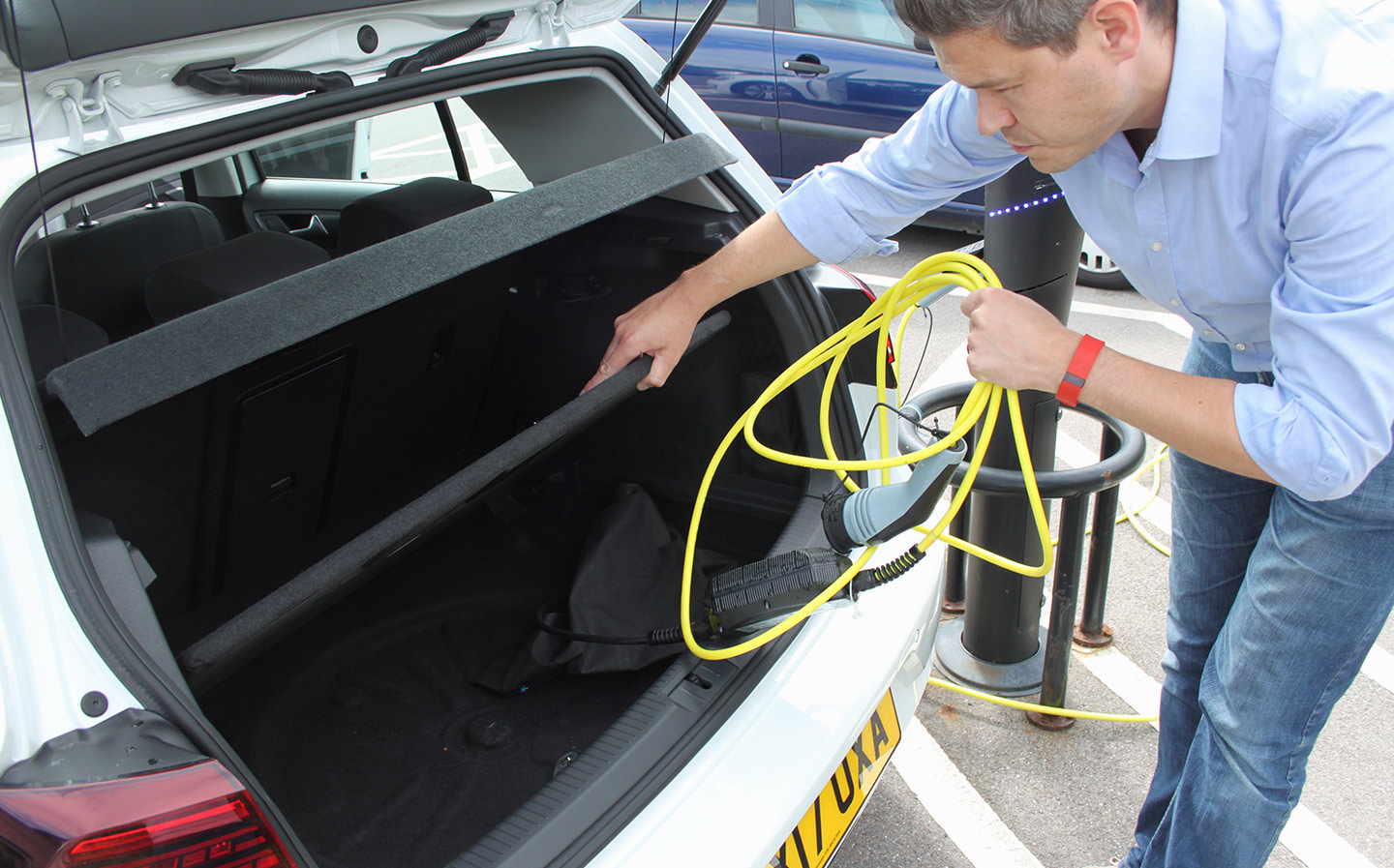
Then we noticed the rear seats split 60:40, and there’s a ski hatch in the central armrest. The i3 splits 50:50 and there was no hatch. And the e-Golf’s boot is just as big as the boot in a diesel-powered version. The VW even has space under the boot floor for the charging cables, plus some other bits and pieces. We just couldn’t find any real compromises in terms of packaging, despite the e-Golf being essentially an electric conversion.
Then we glance back at the i3 REX. The boot is tiny, and reduced over the pure-electric i3 because of the range extender engine. Then we went to compare space in the rear, only to find James had to contort his body around the tiny rear “suicide door”. Honestly, he looked ridiculous, and it’s the sort of thing that parents will find intolerable. The e-Golf had five good-old-fashioned proper doors.
“The range between charges is 186 miles on the official European test, but VW, apparently in post-dieselgate self-flagellation mode, advertises the real range as 124 miles”
So in terms of packaging, the e-Golf works. And there’s absolutely nothing wrong with the latest Golf’s switchgear and seats and infotainment and so on. In fact, it’s all great. Honed over seven generations and 43 years (and refreshed with new tech just at the end of last year). That’s why the thing sells so well; Golf buyers are no fools.
But what’s it like out on the road? And blow me down… it’s a Golf. Sorry, this is probably getting a bit dull now, but it is. The e-Golf has precise steering, which appeared to be weighted better than even the 1.4-litre TSI version I drove recently, grip was good, handling on twisty B-roads was sprightly and fun, and there was little body roll to speak of. Yes, it’s noticeably heavier than its ICE counterparts, but the ride is consistent and predictable.
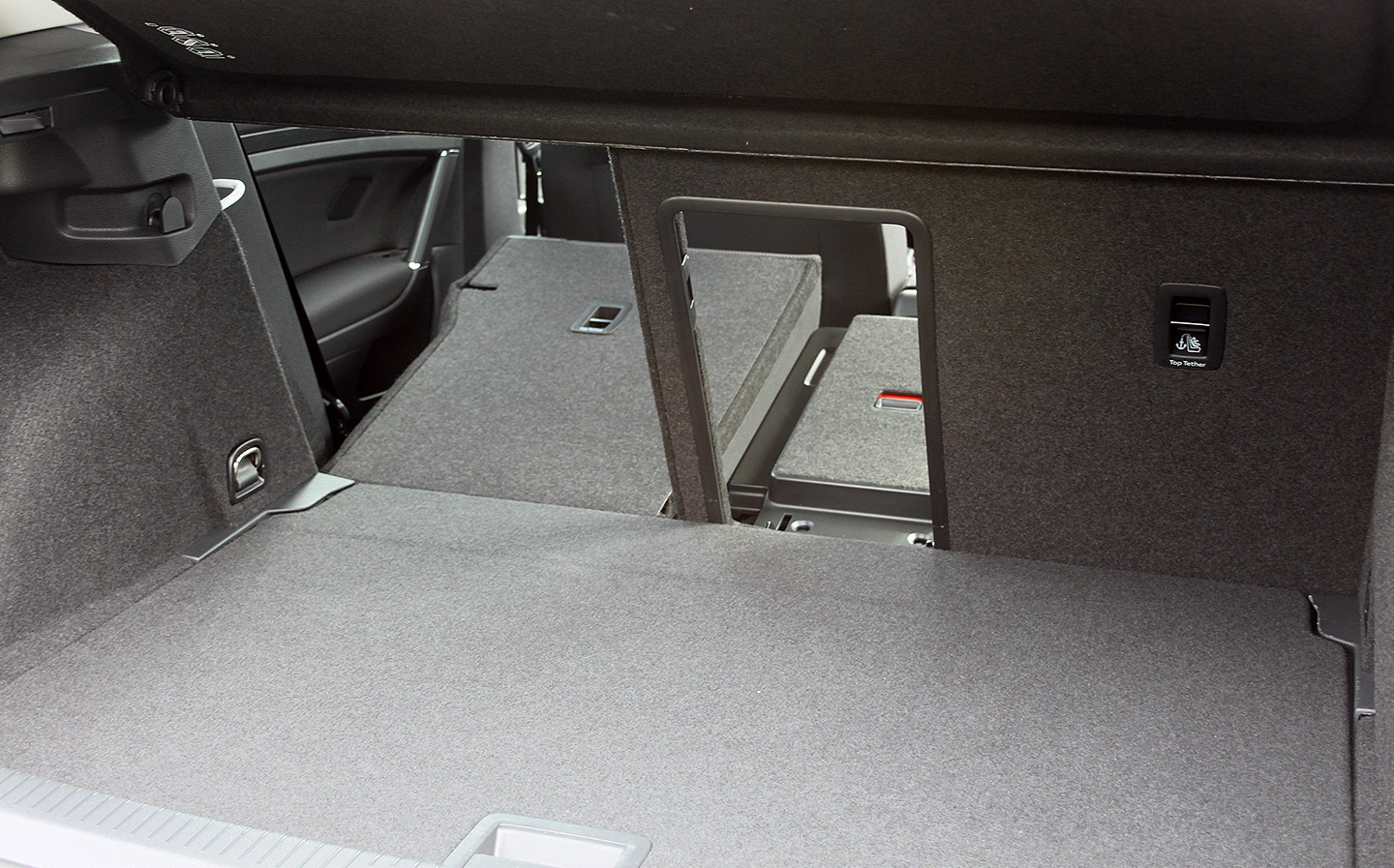
Road noise, wind noise and other attributes we motoring types tend to roll into the catch-all jargonism “refinement” are similar to that of other Golfs, while the pep from the torque-y electric motor means you’ll beat most other cars away from the lights without breaking a sweat. The i3 has the e-Golf beaten here — it’s a bit faster to 62mph.
And then there’s the range between charges — 186 miles on the official European test, but VW, apparently in post-dieselgate self-flagellation mode, advertises the real range as 124 miles. This seems to be much too conservative an estimate. I drove 53 miles to meet James and had an indicated 98 miles left in the tank (so to speak), having used a section of A3 and M25, then mostly flowing A-roads and keeping to the speed limits. I average 4.3 miles per kilowatt-hour (the measure of battery capacity… think of kWh like litres in a petrol tank). I even had to use air condition, as I drove through a rainstorm and needed to stop the windows from fogging.
Weirdly, the e-Golf is set by default not to recover energy through braking, so if you want regen (and you do) you have to pull the gearlever back, switching from “D” to “B”. But that’s the only gripe I had with this car. It had plenty of juice to get me to work and back (a 48-mile round trip) twice before needing to charge, and the car is parked most of the time so it may as well have been plugged in at the same time.
As the car is advertised to accept a DC rapid charge, charging to 80% from flat in 40 minutes, I headed back from my meet with James via the Cobham services on the M25, and plugged into an Ecotricity charger. The process was simple, via an app that showed the live charge level, and Ecotricity sent me a receipt via email for just over £5, comprising a £3 connection fee and the 13.4kWh added. Once more EVs are genuinely capable of around 300 miles, these will be a crucial part of long-distance electric motoring.
What else? Electricity, on a household bill, at least, is much cheaper per mile than petrol or diesel. And when you drive a pure EV, you’re not pumping out fumes into the faces of cyclists (come now, no-one wants that).
So for everyday use the e-Golf is hard to fault. No frills, no quirks. Just a Golf… only electric.
Rating: ★★★★☆
Tweet to @wdron Follow @wdron
2017 BMW i3 REX review
Words: James Mills
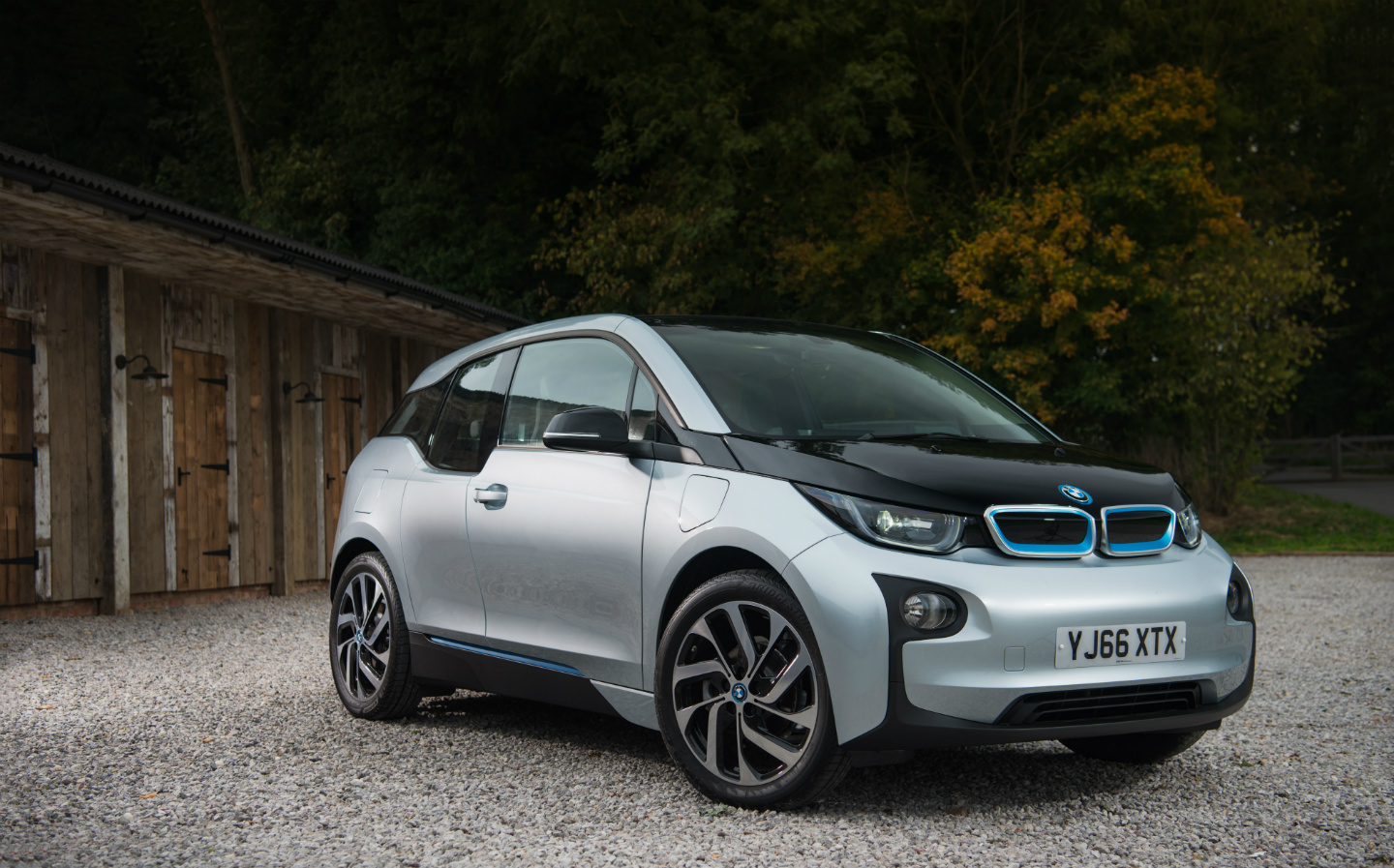
The thought of waking up in the morning, knowing I have to drive an electric car, makes me yawn, rub my eyes and pull the bedcovers over my head.
It’s perhaps an increasingly outdated view but in my view, electric vehicles belong on a golf course or around the back streets of Grimsby, delivering pints of full fat milk.
Even cars like the Tesla Model S, with its 0-62mph time of 4.3 seconds (or 2.5sec for the range-topping version), leave me cold. It’s a tech plaything for the rich, affordable only to those who think nothing of writing a six-figure cheque. And why would I want to wait years for the “more affordable” Tesla Model 3, which recently began production? By the time British drivers start to get theirs, in 2019, one of the big name car makers will surely have come out with something just as good. Or better.
But BMW’s i3 seems to be different. It comes either in pure-electric form or, as we’ve tested here, with a range-extender petrol engine that acts as a generator. But both are interesting because they challenge convention on many levels, and attempt to put the fun into affordable electric family cars.
Instead of taking a normal car and inserting a battery and electric motor, BMW started with a clean sheet of paper. It knew this was the only way to build an efficient electric car, because the weight of the batteries had to be countered by building the car out of light materials.
So, just like a Formula One car, the i3’s core is made from carbon fibre.
Next, the company thought long and hard about packaging. Why, it wondered, do we need a bonnet, when the electric motor is so compact it could go under the boot, and the batteries can be placed beneath the seats? So there’s no lump of metal in the nose, which is good for crash protection. Instead, the motor sits directly between the rear wheels. As any Porsche 911 driver knows, this should ensure good traction and responsive road holding.
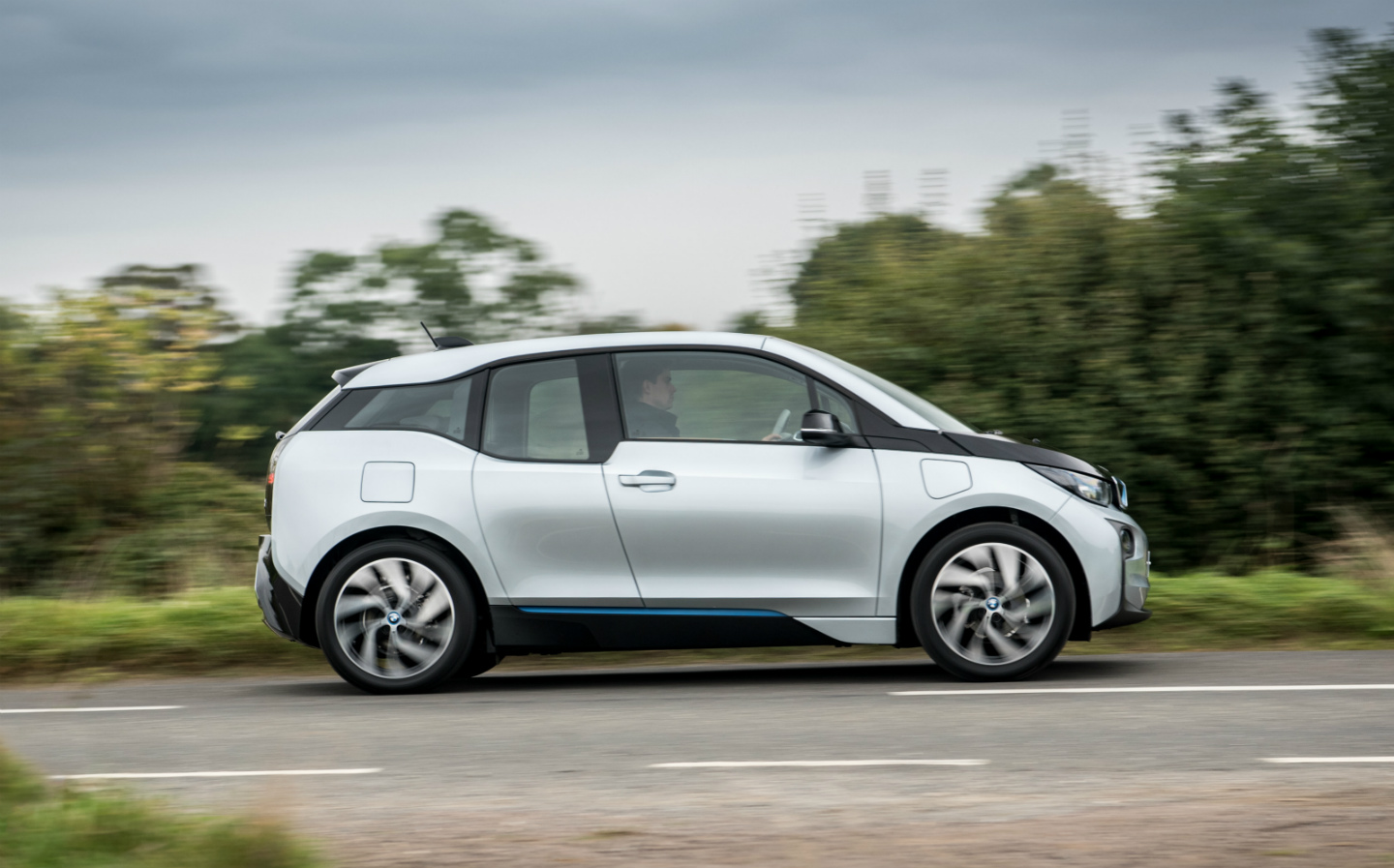
This was all clever stuff. But BMW got something wrong. The original cars featured a 22kWh battery, which was a bit puny; its official range between charges was 80-100 miles.
If you ever had to run a few extra errands in a day, or make an unexpected trip to a neighbouring town, you’d have to find a functioning public charging point, buy a coffee, check the BMW app, do some more shopping, check the app again, then go back to the car and hope there was enough charge to get you home.
The new, 2017 i3 features a 33kWh battery. It gives the car a range of roughly 140 miles, which adds that extra peace of mind.
And BMW offers even more reassurance with the addition of the i3 Range Extender (REX), with its petrol motor — this version manages a total of 200 miles, then a splash of petrol can keep you going even further. It means you can go places and do things you’d never have bothered with in the old car.
“After 60 miles, the battery had 68% of its charge remaining. This little electric car wants to go places”
So I pointed the i3 REX across country, to meet up with Will in his e-Golf. It was a 60-mile drive through Kent to Littlehampton, on the West Sussex Coast, involving B-roads and single and dual-carriageway A roads, with plenty of hills for good measure, but mostly light, flowing traffic.
It took just over an hour and a half of non-stop driving. I used the Eco Pro+ driving mode, which adjusts the response of the electric motor, to conserve energy, suggests a maximum speed of 56mph (you can go beyond this, by forcing the accelerator pedal) and shuts off air conditioning. The average speed was 37mph, and the i3 REX managed to cover 5.3 miles per kilowatt-hour.
This meant little to me. But Will, who is much more of an electric car geek, was impressed – especially considering the REX is 120kg heavier than the basic i3.
More significantly, the battery had 68% of its charge remaining. This little electric car wants to go places.
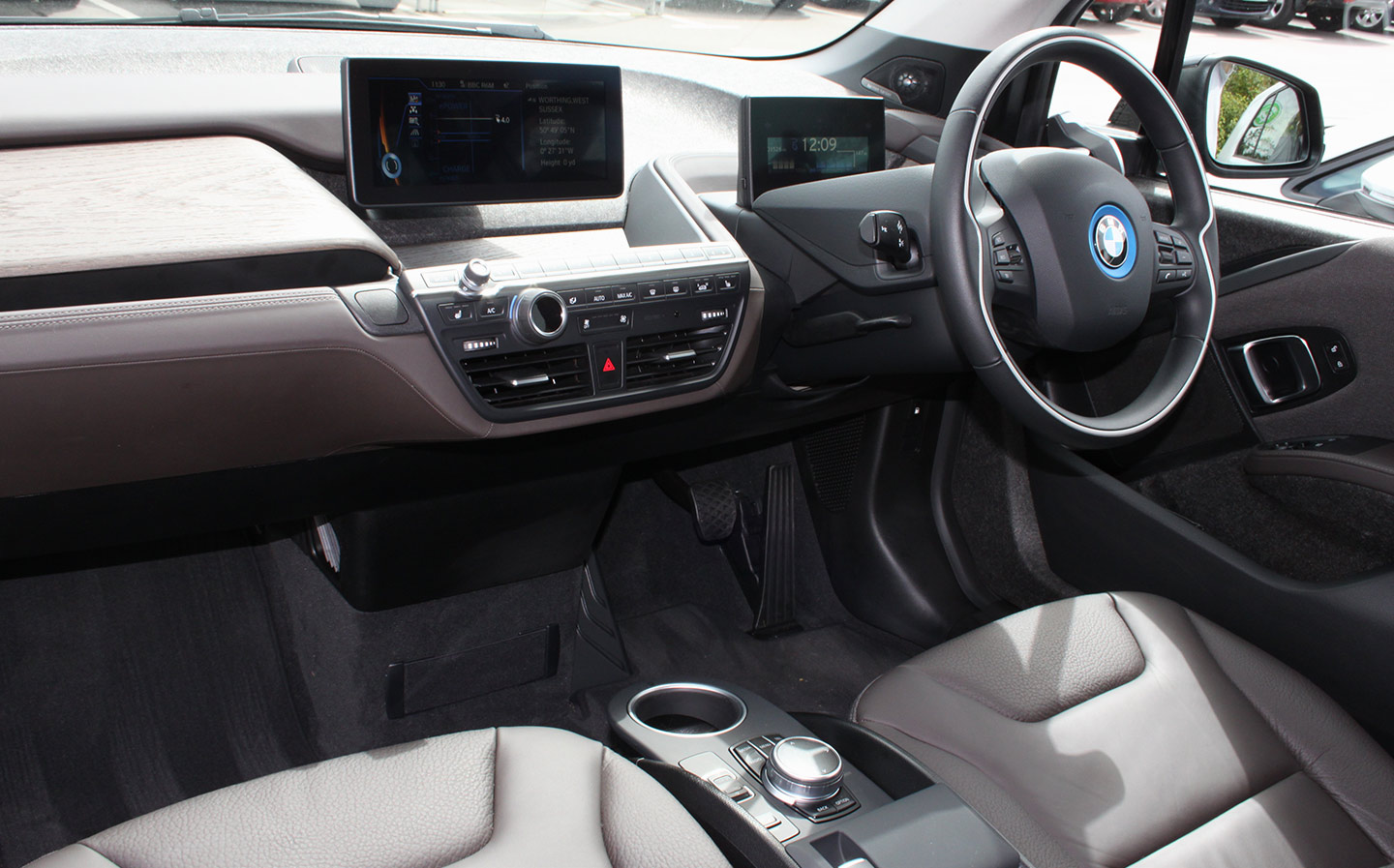
Charging it again was a straightforward process, because we’d met at an Asda supermarket with four public charging points (part of the Polar network from Chargemaster). All were vacant and operational, and within an hour, the i3 was restored to full capacity, using the Type 2 fast charge cable.
What impressed me most about the BMW was its progressive design, spacious cabin and responsive roadholding. Because it’s comparatively light, it feels quick off the mark, pushing you into the seat up to speeds of around 60mph.
It’s over 200kg lighter than the e-Golf, despite having a two-cylinder petrol engine onboard. This tells you all you need to know about the clever but costly construction methods used for the i3’s body. Its carbon fibre reinforced plastic is claimed to be half as light as steel, and 30% lighter than aluminium.
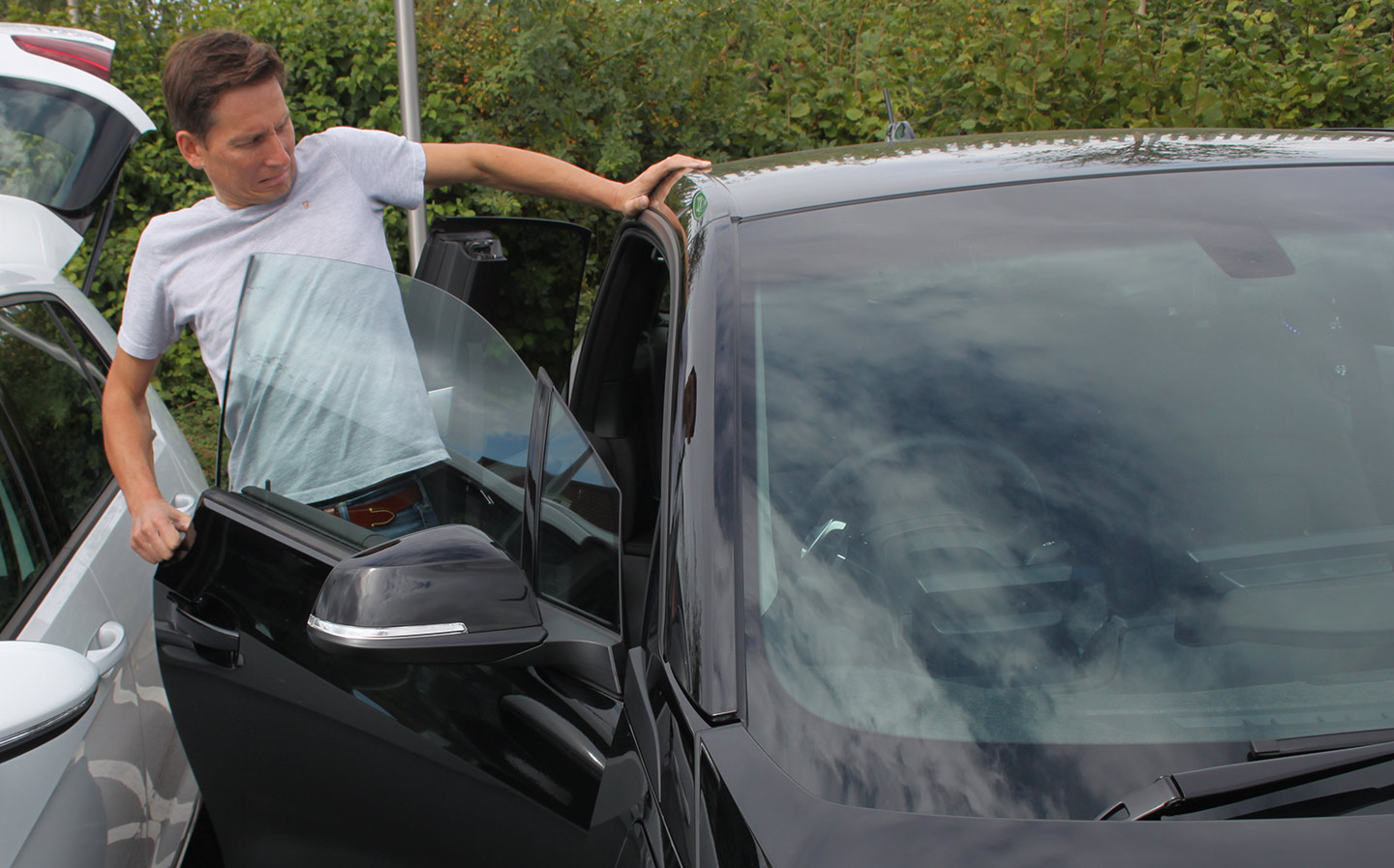
You can have fun taking other drivers by surprise, and the rear-wheel drive chassis makes the i3 feel more alive than most electric cars.
And the way the accelerator pedal can be used to speed up and slow the car to a stop gives drivers something new to master.
Admittedly, on the optional, 20in alloy wheels, the ride comfort of the skinny Bridgestone Ecopia tyres was skittish. And the oh-so-direct steering takes some getting used to.
Another problem is that when you park next to a car or wall, it’s hard to get anyone into the back seats. You have to perform a little dance, opening the front door, then the back door, before closing the front door, shuffling out of the way and letting the passenger pass so they can climb into the back seats. At least once they’re in there it’s spacious.
And the small, 260-litre boot loses points because there’s no place to store the charging cables – whereas in the Golf they go beneath the floor.
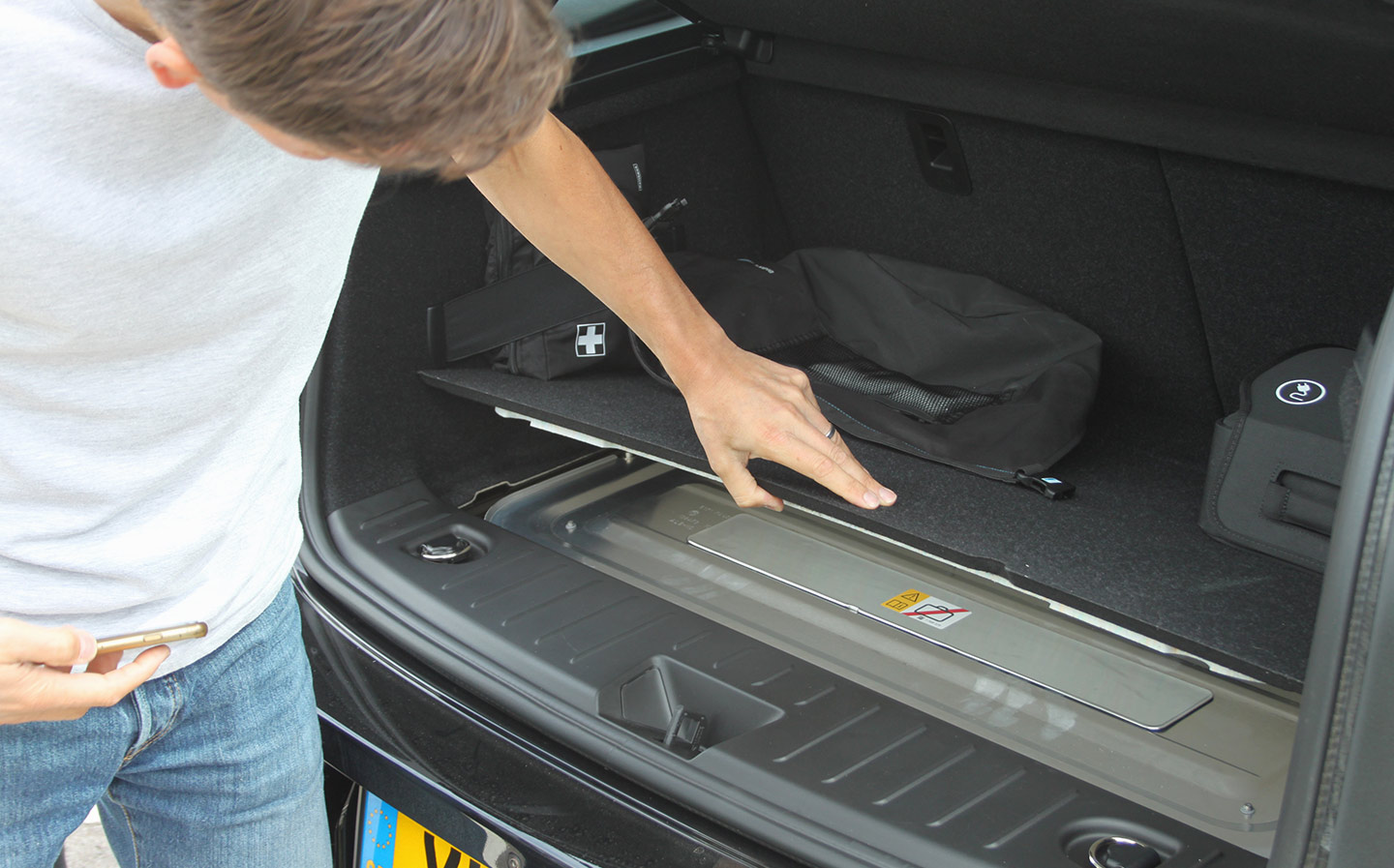
But these fade into insignificance once you show off the interior to friends and family. It’s like no other car on sale, and is all the better for it. Light and airy, it feels more Scandinavian furniture shop than German business hotel.
It’s also practical, and the door panels, made from recycled plant material, are curiously satisfying to stroke and give bragging rights.
After returning home in pouring rain, following the same 60 mile route but driving in Comfort setting and using the lights, wipers, climate control and audio system, the i3 still managed to achieve 4.7 miles per kWh. The battery range stood at 48%.
By challenging convention, the i3 shows that electric cars can be interesting. Is that what most drivers want from their car? Perhaps they do, and just don’t know it yet.
BMW has been bold. It’s even reported to make a profit on every i3 sold, which should make this a textbook lesson for other car makers to follow. Whether they do or not will depend on how willing they are to unlearn 100 years of experience of making petrol and diesel cars.
Rating: ★★★★☆
Tweet to @squarejames Follow @squarejames
BMW i3 REX and VW e-Golf specifications
| BMW i3 (94Ah) REX | VW e-Golf | |
| Price (after gov. grant) | £31,730 | £27,690 |
| Motor output | 125kW (168bhp) | 100kW (134bhp) |
| Battery | 33kWh | 35.8kWh |
| Fuel tank | 9 litres | N/a |
| Official range | 205 miles | 186 miles |
| Charging time (DC rapid) | 80% in <40min | 80% in 45min, 100% in 1hr |
| Charging time (11kW AC rapid) | 80% in <3hrs | N/a |
| Charging time (public fast chargers 7kW/3.7kW) | 5-6hrs/9-10hrs | 6hrs/ 10hrs 50min |
| Charging time (home wallbox) | 4-6hrs | < 6hrs |
| Charging time (household socket) | 12-15hrs | 17hrs |
| 0-62mph | 8.1sec | 9.6sec |
| Top speed | 93mph | 93mph |
| Kerb weight | 1,440kg | 1,615kg |
| Boot space | 260 litres | 341 litres |
| Battery warranty | 8 years / 100,000 miles | 8 years / 99,360 miles |


